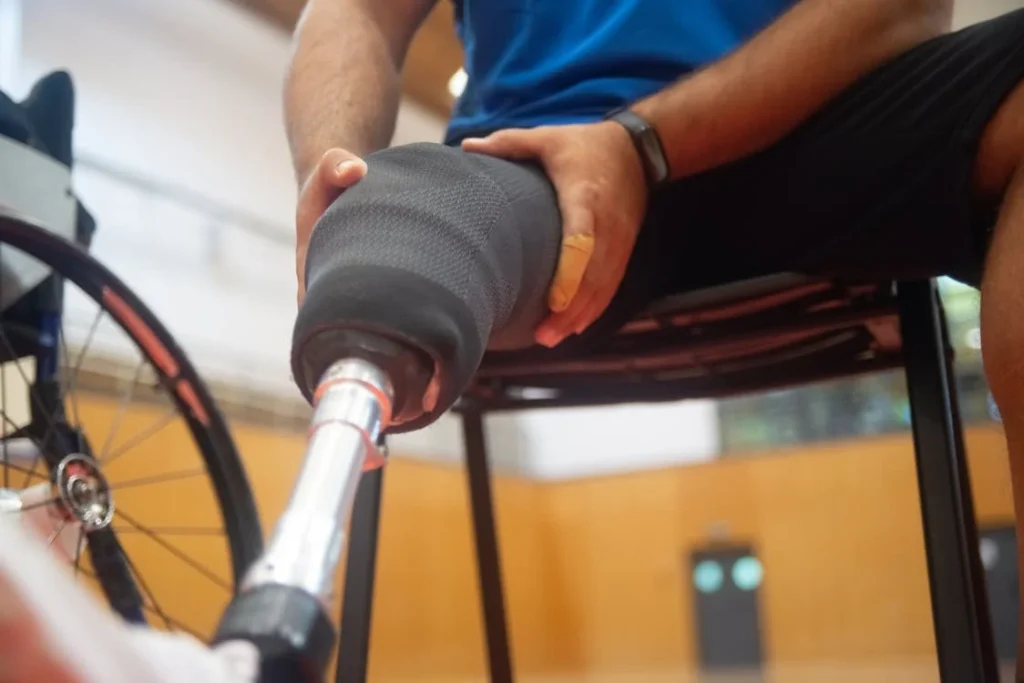Losing a limb is life-changing. It’s not just about adapting to physical challenges or learning to use a prosthetic. One of the hardest parts comes after the surgery—living with post-amputation pain. Many people aren’t prepared for it. The pain can feel like it’s coming from a part of the body that’s no longer there. It can be sharp, burning, or stabbing. Sometimes it stays for months or years. This pain can affect sleep, mood, and even the will to go out and live fully again.
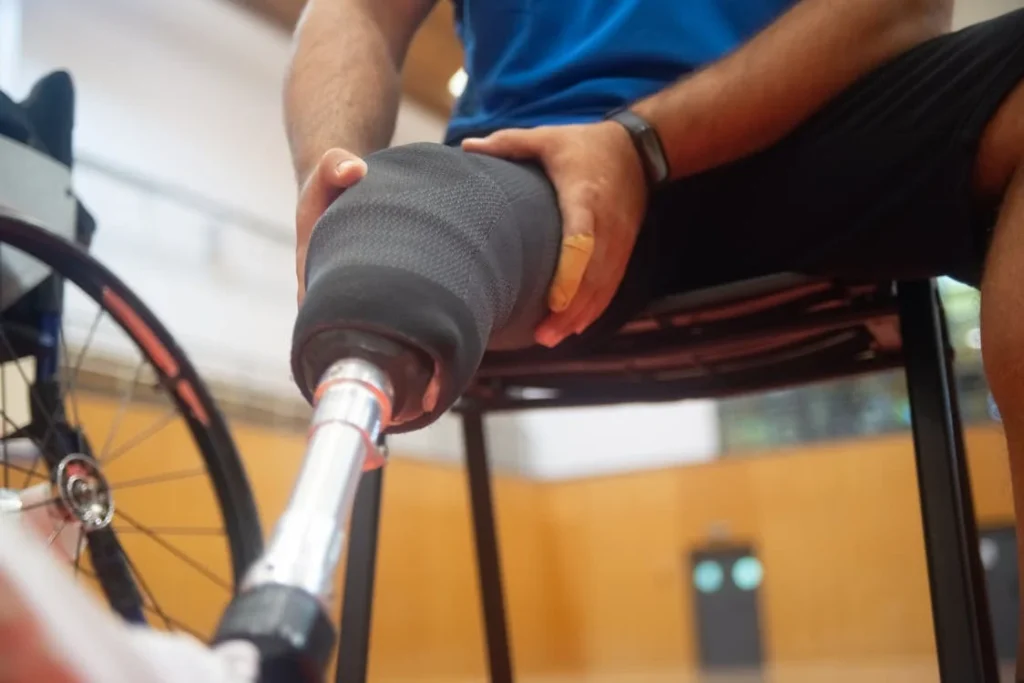
Understanding Post-Amputation Pain
What Is It and Why Does It Happen?
After an amputation, it’s normal to expect soreness around the surgical site. But what surprises many people is that the pain doesn’t always stop there.
Some feel pain in the part of the limb that’s no longer there. This is called phantom limb pain. Others feel sharp or burning pain where the limb was removed, often around the scar or remaining tissues.
This is known as residual limb pain.
These two types of pain can feel very different, but they often appear together. The cause isn’t always simple. After an amputation, nerves in the body get disrupted.
They may form what’s called neuromas—small, tangled balls of nerve tissue that can send mixed or painful signals to the brain.
The brain, still wired to receive signals from the lost limb, may interpret these signals as real pain in a place that no longer exists.
Sometimes the pain feels like tingling, sometimes like pressure or even cramps. It can come and go, or stay constant.
Some people only feel it at night. Others feel it most when they try to use a prosthetic or after physical activity. It’s deeply personal. Two people with similar amputations may have totally different experiences.
The Emotional Side of Pain
Pain isn’t just physical. When you hurt every day, especially after something as traumatic as an amputation, it can take a toll on your mind.
You might feel frustrated, hopeless, or even angry. You might avoid walking, exercising, or meeting people because the pain gets worse.
This can lead to anxiety or depression, which in turn can make the pain feel even stronger.
This mind-body connection is very real. That’s why treating post-amputation pain is not just about stopping physical discomfort. It’s also about addressing how it affects your life and emotions.
At Robobionics, we believe in treating the whole person—not just the symptoms. That means finding a plan that works for your body, your mind, and your lifestyle.
Pain Is Not the Same for Everyone
Another important thing to know is that there’s no single solution. What works for one person may not help another. Your body, your type of surgery, your overall health, and even your emotional state all play a role.
The good news is, there are many options. Medications, therapies, and new technologies are all improving. Some people find relief with traditional medicine.
Others get better results with therapy or alternative treatments. The key is to understand your options and work closely with a team that listens and adjusts as you go.

Medications for Managing Post-Amputation Pain
How Medications Can Help
Pain medications play a big role in controlling post-amputation pain, especially in the early stages after surgery. But they can also be useful long after healing if pain continues.
Medications don’t cure the pain, but they can make it more manageable. The goal is to lower the intensity, improve your sleep, and help you get back to daily life without feeling overwhelmed.
Doctors don’t always start with the strongest drugs. They begin with milder options and increase them only if needed.
This is because stronger drugs can come with side effects or risks if taken too long. The most important thing is that medication must be tailored to your needs—your type of pain, your health, and how your body reacts to treatment.
Over-the-Counter Pain Relievers
For many people, the first type of medication recommended is an over-the-counter pain reliever like paracetamol or ibuprofen.
These can help with mild pain or inflammation, especially in the early weeks after surgery. While they may not fully stop phantom pain, they can help reduce background discomfort and make you more comfortable using a prosthetic.
However, if pain continues for months or worsens, these simple medicines may no longer be enough. That’s when doctors look at stronger prescription options.
Prescription Medications for Nerve Pain
Post-amputation pain often comes from irritated or damaged nerves. That’s why some of the most effective medications are the ones that target nerve signals, not just pain in general.
These are not typical painkillers. In fact, some were first used for other problems like depression or seizures, but doctors discovered they also help calm nerve pain.
One group of medicines often used are antidepressants—specifically those called tricyclic antidepressants or SNRIs. They don’t work instantly.
It may take a few weeks to notice results. But for many amputees, they bring long-term relief by changing how pain messages travel through the nervous system.
Another group is anticonvulsants, which are usually given for epilepsy. Drugs like gabapentin or pregabalin work well for phantom pain because they quiet the overactive nerve endings that cause burning, stabbing, or electric shock-like sensations.
It’s important to remember that taking these doesn’t mean you’re being treated for depression or seizures. You’re being treated for nerve pain—and these drugs happen to be very effective for that.
Opioids: A Careful Choice
Sometimes, doctors may prescribe opioids like tramadol or morphine. These are strong painkillers that work quickly.
But they are used very carefully. Opioids can become addictive if used for too long or in high doses. That’s why they’re usually only given for short periods, such as after surgery or during severe flare-ups.
If opioids are part of your treatment, your doctor will likely monitor you closely. The goal is to use the smallest effective dose for the shortest time possible.
Many patients eventually switch to milder medications or other therapies once their pain becomes more stable.
Topical Medications
In some cases, applying medication directly to the skin can help. Creams or patches that contain lidocaine or capsaicin can reduce surface pain or sensitivity around the residual limb.
These don’t go through your whole system like pills do, so they may have fewer side effects. They’re especially useful when your limb becomes very sensitive to touch or pressure, which can happen with neuromas or skin irritation.
These topical treatments are often used alongside other medications. While they might not stop deeper nerve pain, they can provide a layer of relief that makes day-to-day activities more comfortable.
Medications Are Only One Part of the Solution
While medications can help, they usually work best when combined with other treatments. Pain is complex. It’s not just about nerves or muscles. It’s about how the body and brain react, how you move, how you sleep, and how you feel emotionally.
That’s why many doctors and clinics use a mix of medications and therapies for the best results.
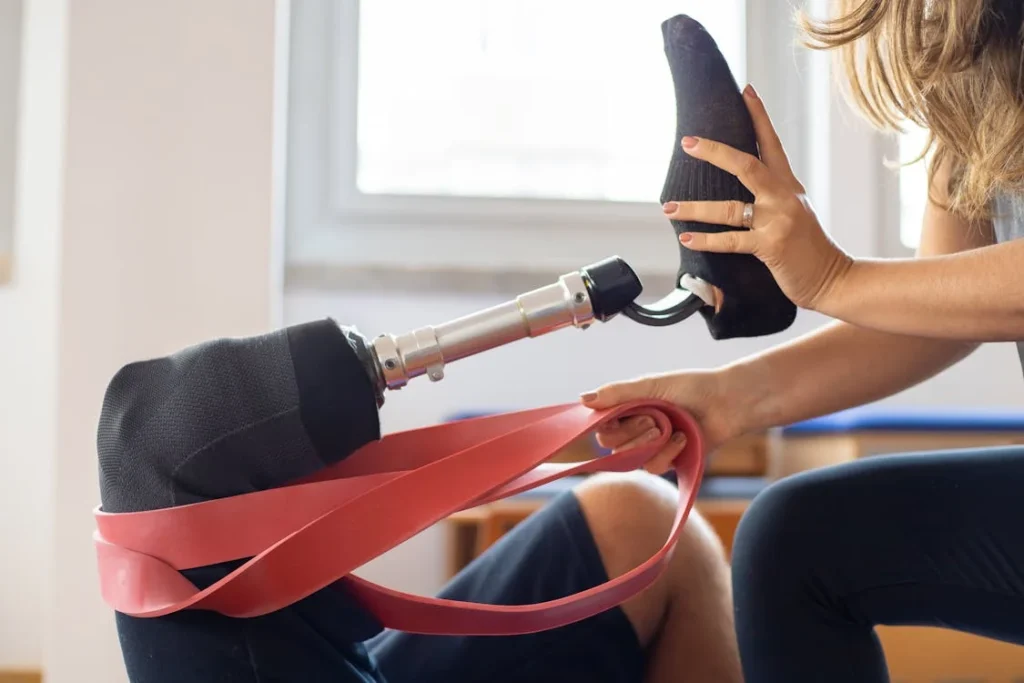
Physical and Alternative Therapies for Post-Amputation Pain
Why Therapy Matters
Medication can take the edge off pain, but it doesn’t fix everything. That’s where therapy comes in. For many amputees, combining physical and alternative therapies with medication is what finally brings lasting relief.
Therapy helps the body adjust, but it also retrains the brain. That’s important, especially when dealing with phantom limb pain, which comes from signals being misread by the brain.
Physical and alternative therapies don’t just ease pain. They help you feel in control again. They give you a way to act, rather than just react. That feeling alone can ease stress and reduce how much pain bothers you day to day.
Physical Therapy: Rebuilding Strength and Reducing Pain
Right after an amputation, most people begin a basic physical therapy routine. The goal at first is simple—keep the rest of your body strong and flexible, and help your wound heal properly.
But physical therapy goes far beyond that.
A good therapist will also work with you to keep the muscles around your residual limb active. This helps prevent stiffness and poor circulation, both of which can make pain worse.
Exercises also help train your body to move in a balanced way. When you move better, you feel better. Over time, this reduces strain on the joints and nerves.
As your body adjusts to using a prosthetic, therapy becomes even more important. Learning how to wear and walk with a prosthetic properly prevents added stress and pressure.
Poor fitting or overuse can lead to pain flare-ups. Your therapist will help you avoid these problems before they begin.
Sometimes therapists use treatments like massage, heat therapy, or ultrasound. These can reduce tightness and soothe irritated nerves.
Even basic things like posture training and balance work can go a long way in making everyday movement more comfortable.
Mirror Therapy: Rewiring the Brain
Mirror therapy is one of the most fascinating—and surprisingly effective—methods for reducing phantom limb pain. It’s based on a simple idea.
When you place a mirror next to your intact limb and move it, your brain sees the reflection and thinks your missing limb is moving too.
This can sound strange, but many people find relief within just a few sessions. Phantom limb pain is often caused by the brain’s confusion.
It still expects to receive signals from the missing limb. Mirror therapy helps rewire the brain and calm that confusion.
It doesn’t work for everyone. But for those it does help, the effects can be powerful. It’s safe, simple, and easy to do at home with some guidance. Many amputees use it as part of a daily pain management routine.
Acupuncture and Dry Needling
In some cases, alternative therapies like acupuncture or dry needling can provide extra relief. These involve inserting very thin needles into the skin at specific points to stimulate the nervous system.
For some, this helps reduce pain signals or loosen tight muscles.
The science behind these methods is still growing, but many people report feeling less pain or more relaxation after sessions. The effects can last from a few days to a few weeks.
When used alongside other treatments, acupuncture or dry needling can add another layer of comfort to your recovery plan.
It’s important to go to licensed professionals who have experience working with amputees. Not all practitioners are familiar with how limb loss changes muscle patterns or nerve behavior.
TENS Therapy: Electrical Relief
Transcutaneous electrical nerve stimulation—better known as TENS—is another therapy that works for some people.
It uses a small device that sends gentle electrical signals through pads placed on the skin. These signals can block or disrupt pain messages going to the brain.
TENS doesn’t hurt, and many people use it at home. It’s most effective for surface-level pain or when nerves are overly sensitive.
While it may not work for deep phantom pain, it’s a good option to explore, especially when combined with physical therapy or medications.
TENS therapy is usually introduced by a therapist or doctor who shows you how to use it safely. It’s non-invasive and has very few risks, making it a popular option for those looking to reduce how often they rely on medication.
Yoga, Meditation, and Mind-Body Approaches
Pain doesn’t only live in the body. It also takes root in the mind. That’s why therapies that address stress, anxiety, and mental tension can make a real difference.
Yoga, for instance, improves flexibility and body awareness, while also calming the mind. Simple poses or guided routines can be adapted for amputees, and even seated practices offer major benefits.
Meditation and breathing exercises are also useful tools. They teach you how to focus, slow your breathing, and lower your stress. When the brain is calmer, pain tends to feel less intense.
Over time, these habits can even reduce how often pain occurs.
Some people also try guided visualization or biofeedback. These techniques teach you how to take control of your body’s responses, like muscle tension or heart rate.
With practice, you can train your body to respond more gently to pain triggers.
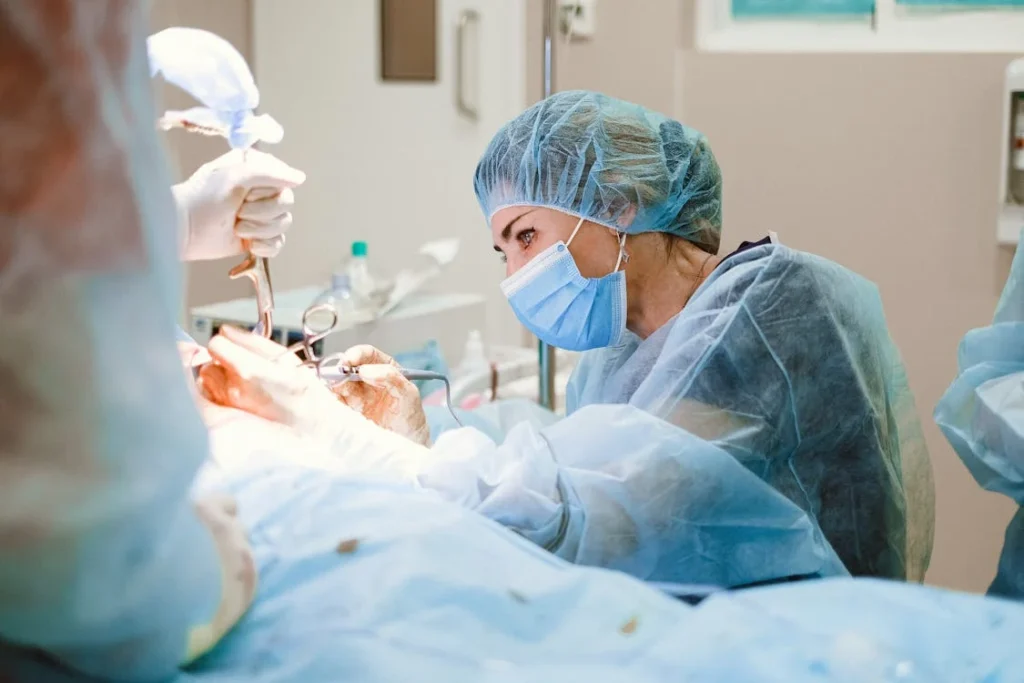
Surgical and Emerging Treatments for Post-Amputation Pain
When Other Treatments Aren’t Enough
Most people prefer to start with medications or therapy—and that’s usually the best approach. But sometimes, even after trying everything, the pain doesn’t go away.
When pain becomes severe, constant, and unmanageable, surgery may become an option. Surgical treatments are not the first choice, but in the right cases, they can offer powerful, long-lasting relief.
Doctors will only suggest surgery after a full evaluation. They’ll check how long you’ve had the pain, how bad it is, and whether other treatments helped or not. Y
ou might be asked to try certain therapies or medications for several months before surgery is considered.
Neuroma Surgery: Targeting Damaged Nerves
One common cause of post-amputation pain is neuromas. These are small growths that form when nerves try to heal but end up tangled or trapped in scar tissue.
Neuromas can become extremely sensitive, sending out sharp, shooting pain if touched or squeezed—even by something as simple as putting on a prosthetic.
Surgery for neuromas involves either removing the damaged nerve tissue or relocating the nerve deeper into the muscle, where it’s less likely to get irritated.
This kind of surgery is often called targeted muscle reinnervation (TMR). It gives the nerve a new place to “plug in” and reduces the risk of phantom pain later on.
TMR is not just a fix for pain—it also helps some people control advanced prosthetic limbs more naturally. That’s a bonus for those using robotic arms or legs that respond to muscle signals.
Revision Surgery: Correcting Limb Problems
Sometimes the problem isn’t the nerves—it’s the shape or condition of the residual limb. If the bone is uneven or sharp, or if there’s too much scar tissue, it can press on nerves and cause pain.
A poorly shaped limb can also make it harder to wear a prosthetic comfortably.
In these cases, doctors may perform revision surgery. This means reshaping the limb, removing bone spurs, or smoothing out muscle and tissue to create a better fit.
The goal is to reduce pressure points and pain while improving function. After healing, most patients report better comfort and ease of movement.
This surgery requires careful planning, especially if you’re already using a prosthetic. Your doctor will likely involve your prosthetist to ensure the new shape of your limb matches your device for the best results.
Spinal Cord Stimulation: A Modern Pain Solution
For more stubborn types of pain—especially phantom limb pain—some patients turn to a method called spinal cord stimulation (SCS).
This is an advanced treatment where a small device is implanted near the spine. The device sends tiny electrical signals that disrupt pain messages before they reach the brain.
SCS doesn’t cure the pain, but it changes how the brain interprets it. Many patients describe a tingling or warm feeling instead of sharp pain.
For some, the relief is dramatic. Others experience more modest results, but still feel better than before.
This treatment is typically offered to people who’ve tried medications, therapy, and even surgery without enough relief.
Before implanting the device, doctors usually do a short trial with a temporary stimulator to see if it works for you.
Peripheral Nerve Stimulation
A similar but more localized approach is peripheral nerve stimulation (PNS). Instead of placing a device near the spine, the stimulator is placed closer to the nerve causing the pain—usually in the limb itself or near the site of amputation. Like SCS, it delivers tiny electrical pulses that block pain.
PNS is less invasive and can be removed easily if it’s not helpful. It’s often used when pain is focused in one area or linked to a specific nerve. It’s not for everyone, but in the right case, it can make a big difference.
Both PNS and SCS are part of a growing field of neuromodulation—new ways to change how the nervous system responds to pain.
As these treatments become more common, more amputees may benefit without relying heavily on medication.
Regenerative Medicine and Stem Cell Therapy
Another exciting area is regenerative medicine, especially stem cell therapy. While still considered experimental in many places, early studies suggest that stem cells might help heal damaged tissues and reduce inflammation around nerves. This could offer a more natural, long-term solution to chronic pain.
These treatments are still being tested and are not widely available yet. But as research continues, they may become part of the standard care for post-amputation pain. For now, they are offered mostly in research settings or private clinics with strict monitoring.
Doctors and researchers are also exploring other new ideas, like virtual reality therapy or brain-computer interfaces that retrain how the brain understands pain.
These sound futuristic, but early trials have shown promise, especially for complex phantom pain.
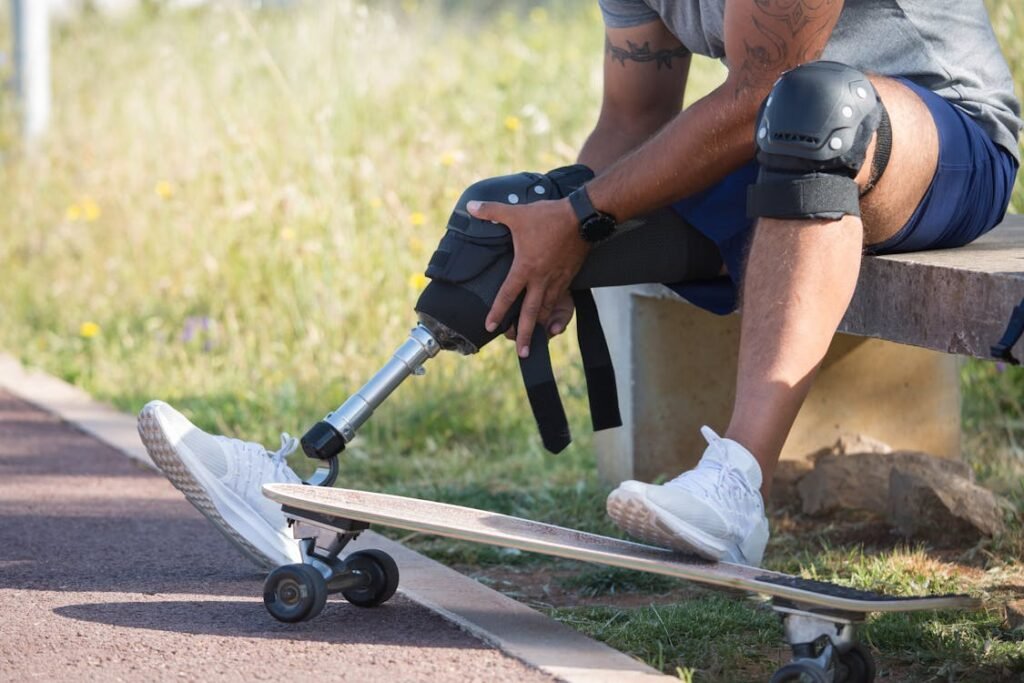
Building a Long-Term Pain Management Plan
The Power of a Personalized Approach
Managing post-amputation pain isn’t about finding one perfect cure. It’s about building a plan that fits your body, your lifestyle, and your goals. That plan may change over time.
What works today might not be enough a year from now, and something that didn’t help at first might become useful later. The most successful amputees learn to be flexible, curious, and committed to finding what works for them.
Pain is complex. It touches your body, your brain, your emotions, and your relationships. That’s why pain management must be just as multi-layered.
A good plan includes medical care, physical support, emotional tools, and lifestyle habits that all work together. Think of it as a team effort—with you at the center.
Work with the Right Professionals
Your recovery and long-term comfort depend heavily on the people guiding your care. That usually starts with your surgeon, but it expands quickly.
A pain specialist can help explore medication options or newer treatments like nerve stimulation. A physical therapist helps you move and train your body in ways that reduce pain.
A prosthetist ensures your device fits comfortably and supports your movement, instead of creating pressure or imbalance.
In many cases, a psychologist or counselor becomes part of your team too. Pain and mental health are closely tied. Talking through your experience, learning ways to calm your mind, or even using cognitive-behavioral therapy (CBT) can make a huge impact on how you experience pain.
Don’t settle for one-size-fits-all care. Find a team that listens, adjusts, and treats you as a whole person. When your care providers talk to each other and work together, you’re more likely to feel understood and supported.
Track Your Pain to Understand It
One powerful habit is keeping a pain journal. It doesn’t need to be long or detailed—just a quick daily note about how much pain you felt, what you did that day, and anything that helped or made it worse.
Over time, this gives you patterns to study.
You may notice that your pain flares up after long walks, or when you don’t sleep well, or when you’re feeling anxious.
You may also discover that stretching every morning, using a heating pad, or meditating at night lowers your discomfort. These insights help you take control. They also give your doctor better information to work with.
When you track your pain, you become an active part of your treatment—not just a patient waiting for relief. That shift in mindset alone can make you feel stronger and more hopeful.
Stay Active, Even in Small Ways
Movement is medicine. It may seem strange, especially when pain makes you want to rest, but being active can actually reduce chronic pain.
It improves blood flow, keeps joints healthy, strengthens your muscles, and even boosts your mood.
You don’t have to do intense workouts. Gentle walking, stretching, swimming, or light yoga can all help. The key is consistency.
Even a short daily routine keeps your body and brain working together in a healthy way. If something hurts, adjust the movement rather than quitting entirely.
Use your prosthetic whenever you can. It may be uncomfortable at first, but most amputees feel less pain in the long run when they walk and move regularly. Work with a therapist if needed to ease into this safely.
Sleep and Rest Matter More Than You Think
Pain and poor sleep often go hand in hand. If you don’t sleep well, your body doesn’t heal properly, and your brain becomes more sensitive to pain.
On the other hand, good sleep improves how you tolerate pain, reduces inflammation, and supports mental health.
Create a calm evening routine. Avoid caffeine late in the day. Limit screen time before bed. Try calming activities like reading or gentle music.
If pain keeps waking you up, speak to your doctor. Sometimes adjusting your medication schedule or using support pillows can help.
If sleep problems persist, don’t ignore them. Treating sleep as part of your pain plan can make a bigger difference than you expect.
Learn to Manage Stress
Pain is louder when your mind is tense. That’s not just a feeling—it’s proven in research. Stress increases the body’s sensitivity to pain and tightens muscles, making discomfort feel worse.
That’s why stress management isn’t a luxury. It’s part of recovery.
You can start small. Practice deep breathing once a day. Take a quiet walk without your phone. Write in a journal or talk to someone you trust.
Some people find prayer or spiritual practice comforting. Others use apps for meditation or calming sounds.
You don’t have to eliminate stress completely. But the more tools you have to stay calm and centered, the less control pain has over your life.
Accept Help and Stay Connected
Many amputees struggle with isolation. Pain makes it harder to socialize, work, or enjoy hobbies. Over time, you may start to withdraw—and that can increase both physical and emotional pain. One of the best things you can do for your recovery is to stay connected.
Talk to family and friends. Join an amputee support group, either in person or online. Speak openly with your care team.
Let others know when you’re struggling—and also when you’re proud of progress. Being part of a community reminds you that you’re not alone, and that others are walking the same road.
At Robobionics, we’ve seen how powerful peer support can be. Sharing your story, asking questions, or just listening to others helps you heal in ways that no medication can.
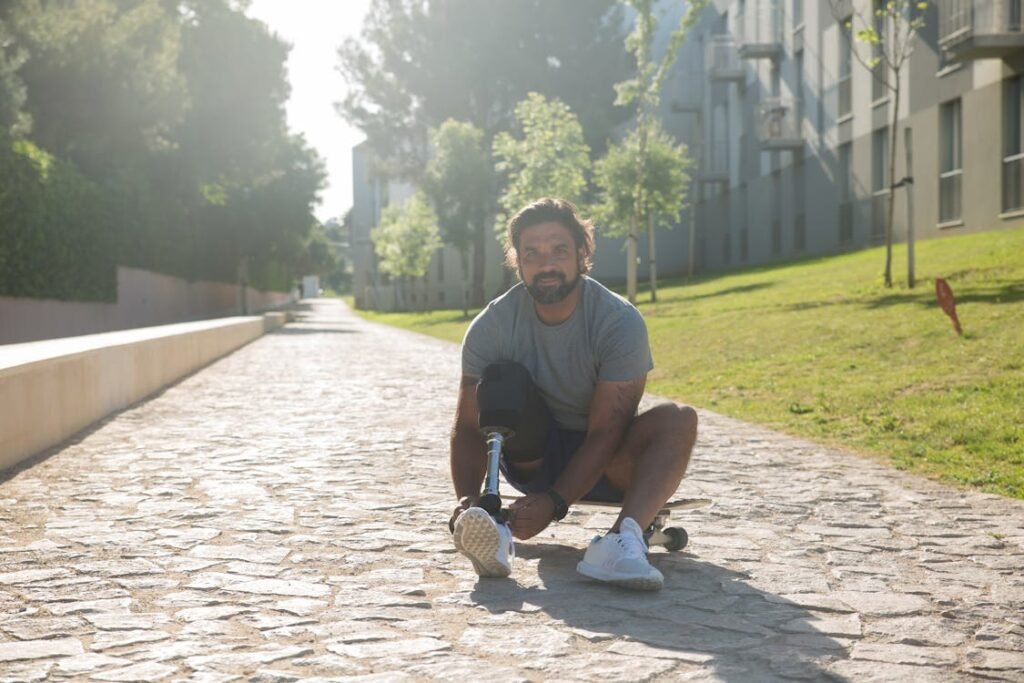
Living Beyond Pain: Final Thoughts and Next Steps
You Are Not Alone in This Journey
Living with post-amputation pain can feel like a lonely road, especially when it shows up uninvited and refuses to leave. But you are far from alone.
Around the world, millions of amputees are walking this same path—many of them finding real relief, new strength, and a better quality of life.
The most important thing to remember is this: your pain is real, but it does not define you. It doesn’t get the final say in your story.
Healing after an amputation is a journey of the body and the mind. There will be good days and hard days.
But every small step you take toward understanding your pain, trying a new therapy, adjusting your care, or simply choosing to move forward matters more than you know.
There’s no shame in needing help. Whether it’s from a doctor, therapist, support group, or family member—lean into that support.
Surround yourself with people who lift you up, who listen without judgment, and who remind you of your strength when you forget.
Stay Open, Stay Patient
Treating post-amputation pain takes time. The first solution you try may not be the right one. That’s okay. The second or third one might be.
Sometimes it’s the combination of treatments that brings relief. And sometimes, your body simply needs more time to adjust and heal.
Don’t lose hope if things don’t improve right away. And don’t give up if a certain medication, therapy, or prosthetic feels wrong at first.
Be open to revisiting options, tweaking your plan, and trying again. Healing is rarely a straight line—it’s more like a winding path with turns and breakthroughs you didn’t expect.
Every day that you keep showing up for yourself—every appointment you go to, every stretch you do, every quiet moment you take to breathe—that’s healing. That’s strength.
Build a Life That Supports Healing
Pain management isn’t just about pills, procedures, or therapy sessions. It’s about the way you live each day. Surround yourself with comfort. Take care of your environment.
Eat nourishing foods, drink water, and rest when your body asks for it. Do things that bring you joy, even in small amounts. Laugh when you can. Connect with others. Celebrate even tiny victories.
If you’re working with a prosthetic, give yourself time to adjust. Let your body speak. If something feels wrong, don’t ignore it—adjust it, fix it, get help.
A well-fitting prosthetic, used with confidence, can become one of your greatest tools not just for movement but for freedom.
And always stay informed. The world of medicine and prosthetics is evolving fast.
New treatments, smarter devices, and better pain therapies are being developed every year. Stay curious. Ask questions. Know your options.
You Deserve Comfort, Confidence, and a Full Life
At Robobionics, we’ve walked beside hundreds of amputees through every stage—from recovery, to adaptation, to full, thriving lives.
We’ve seen the tears, the setbacks, the frustration. But more than that, we’ve seen courage. We’ve seen people walk again, work again, dance again, and dream again.
So wherever you are in your journey—newly healing, years down the road, or somewhere in between—know this: You deserve relief.
You deserve tools that work. You deserve a care team that listens. You deserve to feel strong in your body and at peace in your mind.
Pain may visit. But with the right plan, the right people, and the right mindset—it doesn’t have to stay.
If you’re looking for support, have questions about prosthetics, or want to know more about pain solutions, reach out to us at Robobionics. We’re here to help, and we’re honored to be part of your journey.
Conclusion
Post-amputation pain is real, complex, and deeply personal—but it is not unbeatable. With the right mix of medications, therapies, and support, relief is possible. What works will be different for each person, and that’s okay. Healing is a journey, not a race.
The most powerful thing you can do is stay informed and stay involved in your own care. Speak up. Ask questions. Try new approaches. Adjust when things don’t work. And most importantly, don’t give up. Every small step toward comfort is a victory.
At Robobionics, we believe in more than just building prosthetics—we believe in rebuilding confidence, comfort, and quality of life. Pain may be part of your story, but it does not define your future. You are more than your pain, and you deserve to live fully.
Your strength brought you this far. Let hope, care, and the right support carry you the rest of the way.



